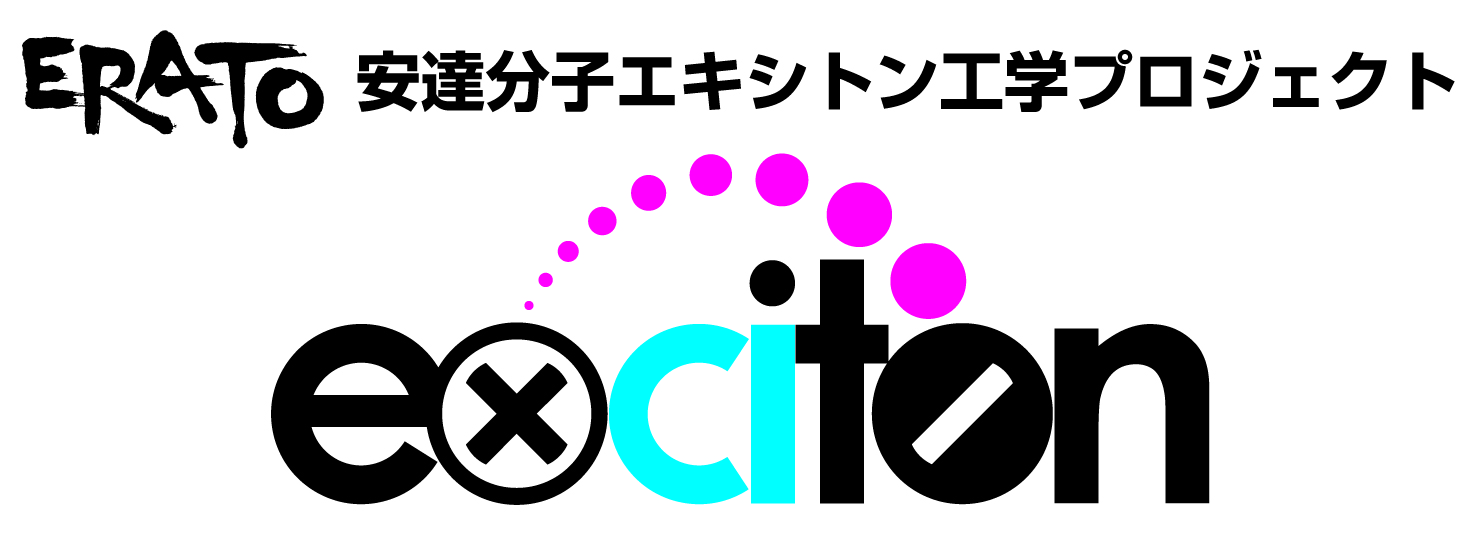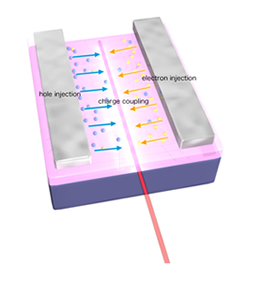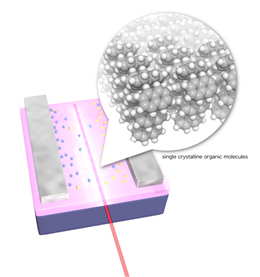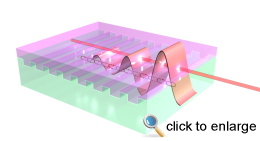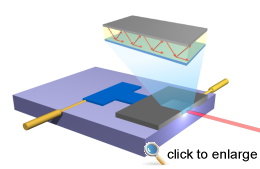Organic Laser Diode (OLD)
1.Organic Light-Emitting Diode (OLED) | 2.Organic Field-Effect Transistor (OFET) | 3.Organic Laser Diode (OLD) | 4.Organic Solar Cell (OSC)
Organic Laser Diode (OLD)
Organic light-emitting diodes (OLEDs) have been extensively developed during the past 15 years and various commercial applications have recently been introduced by utilizing the unique characteristics of organic materials, such as high photoluminescence (PL) quantum efficiency, a tunable emission spectrum in visible regions, and electrical conduction in a high electrical field. Over recent years, a wide variety of challenges aiming for electrical pumping of organic laser diodes have been addressed. However, organic laser diodes have still not been realized owing to their high lasing threshold under electrical pumping. To realize organic semiconductor laser, injecting and transporting high current density over few KA/cm2 and suppressing exciton annihilation under high current density are required.
Laser Device with OFET structure
One of promising device architectures for electrical pumping is an FET structure, since the lateral electrode arrangement provides various kind of freedom for optical confinement such as DFB and DBR optical resonators between the electrodes. Therefore, by positioning the emission site apart from the electrodes, we can escape propagation loss of light by metal electrodes. To realize organic field-effect transistor laser, we now are developing the ambipolar organic light-emitting transistor by using an organic single crystals or organic-inorganic hybrid structure.
Single Crystal Laser
Although the charge carrier mobilities of amorphous organic materials and semiconducting polymer are generally low compared with those of inorganic materials, organic single-crystals show high charge carrier mobilities due to their molecular orientation. Furthermore, some organic single crystals show high photoluminescence quantum efficiency and low ASE thresholds. By using these organic single-crystals, we now are developing light-emitting ambipolar transistors for future organic laser.
DFB Resonator
To achieve a low lasing threshold compared with amplified spontaneous emission (ASE), introduction of resonator such as DFB (Distributed Feedback) or DBR (Distributed Bragg Reflector) are need. Especially, DFB resonators can obtain a high optical gain in the organic active layer. In our group, DFB is made by using two beam interference exposure method and electron beam lithography method.
Singular Phenomena at Cutoff Wavelength
Recently, we observed unusual spectral narrowing in an organic thin film under optical or electrical excitation. Although we observed no clear threshold characteristics on the spectral narrowing, the nonlinearly-enhanced optical gain, polarized and narrowed emission characteristics indicates occurrence of light amplification.


